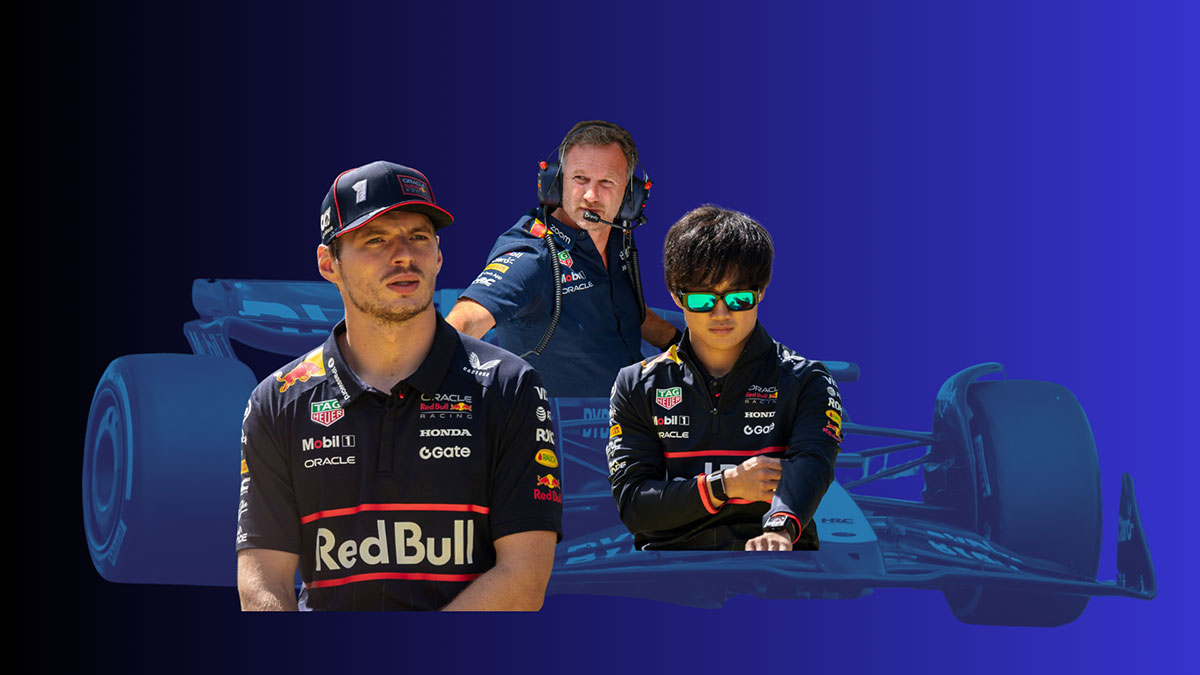
Dynasties rise and fall as quickly as a Formula 1 car rounds a corner. Red Bull Racing had a near-perfect season in 2023, winning 21 out of 22 races.
Max Verstappen was crowned champion once again, and Sergio Perez made it first 1-2 finish for Red Bull as they easily won the constructors title as well.
They were set for more wins and history in F1, setting the stage for dominance — until the cracks began to show.
Success was short-lived, and instability for the team rose.
The first signs came in the 2024 season. Verstappen retired in the Australia race after his car was spitting flames. The once-winning team went winless for seven races, raising many questions.
Team principal Christian Horner admitted to Auto Motor und Sport magazine that the problems could be traced back to the 2023 Spanish Grand Prix.
This was the race where Perez pointed out struggles with the car, but the team chose to ignore him. Verstappen was still winning; thus, the issue was the driver, not the car.
However, prioritizing one driver over the other isn’t new for Red Bull. It’s a part of their history.
Former drivers Sebastian Vettel and Mark Webber are a testament to the prioritization of a driver.
Throughout the years as teammates, Webber highlighted the preference to upgrade and develop Vettel’s car.
This has continued in the Verstappen era as he has flown through teammates.
Daniel Ricciardo, Pierre Gasly, Alex Albon, Sergio Perez and Liam Lawson — every single one of them has struggled with Red Bull, while Verstappen has exceeded all expectations.
Lawson only lasted two races before being replaced by current, and sixth, teammate Yuki Tsunoda.
Being Verstappen’s teammate is hard, but it’s harder to navigate a team that doesn’t listen to feedback. Especially when other teams listen to their drivers’ feedback and adjust their cars as needed.
This is reflected in the F1 standings. Verstappen, through the struggles, is currently third while Tsunoda is languishing near the bottom of the list in 17th.
Uncertainty surrounds the second Red Bull seat as to who is set to drive alongside Verstappen next year in a season of regulation changes.
The instability worsened when key figures left Red Bull in the middle of last season to join other teams. The mastermind behind the car, Adrian Newey, left the team after a 19-year tenure. Sporting director Jonathan Wheatley left to become team principal for Kick Sauber. And head of strategy Will Courtenay is leaving to join McLaren when his contract ends in mid 2026.
The biggest shock came in July when long-time team principal and CEO, Christian Horner, was let go. Horner had been the subject of accusations of harassment and creating a toxic work environment. Laurent Mekies, former team principal for Racing Bulls, was appointed to take his place.
It’s hard not to point the finger at Red Bull over their handling of their own team through the instability and uncertainty. Verstappen is undoubtedly one of the best drivers the sport has seen, but there is only so much he can do.
The hope is that Red Bull, under Laurent Mekies, will rise from the ashes of the Horner-led team and make the turnaround.
If things do not improve soon, they may find themselves without the services of the great Dutchman. Then we will see Red Bull without its wings.
